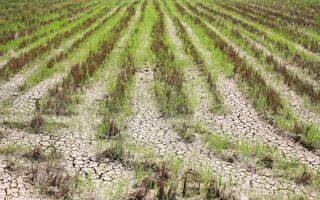Drought is a silent killer in Asia and the Pacific. While effective early warning systems for drought can help save lives and livelihoods, access to scientific information and knowledge remains a challenge for many countries in the region.
Against this backdrop, senior government representatives, regional experts and related UN agencies met in Colombo today to exchange good practices and discuss strategies for reducing the impacts of agricultural drought in Asia and the Pacific.
Organised by the United Nations Economic and Social Commission for Asia and the Pacific (ESCAP) and the Sri Lanka Ministry of Technology and Research, the forum is a milestone event in the region on drought monitoring and early warning.
“Over the past three decades, it is estimated that droughts in the region have affected more than 1.3 billion people and caused damages of over $53 billion,” said Ms. Shamika Sirimanne, Director of ESCAP’s Information and Communications Technology and Disaster Risk Reduction Division.
She emphasised that efforts to reduce the impacts of drought will require timely access to satellite-derived data: “Signs of drought can be observed from space long before they are visible to the human eye. Advances in space technology allow us to monitor the condition of crops, or the the availability of water, from satellite images, and sharing this information through regional cooperation will save lives and protect livelihoods.”
Despite significant progress in monitoring agricultural drought, access to satellite-derived data and knowledge for improving early warning remains a challenge for many countries in Asia and the Pacific.
“
Signs of drought can be observed from space long before they are visible to the human eye. Advances in space technology allow us to monitor the condition of crops, or the the availability of water, from satellite images, and sharing this information through regional cooperation will save lives and protect livelihoods
Shamika Sirimanne, Director of ESCAP’s Information and Communications Technology and Disaster Risk Reduction Division
The Regional Drought Mechanism, launched by ESCAP in 2013, is a key platform that provides timely and free satellite-based data, products and training to drought-prone countries in the region for effective agricultural drought monitoring and early warning.
These data, when combined with information collected on the ground, leads to more effective detection of potential drought conditions. For example, satellite images can detect the onset of drought in specific areas or provinces, allowing time for local authorities to take immediate action, such as informing farmers to switch to more drought-resistant crops or implementing water management strategies.
“This year may witness the beginning of another El Niño period affecting Sri Lanka, possibly with serious implications for agriculture, one of the most important sectors for the country,” warned His Excellency Mr. Patali Champika Ranawaka, Minister of Technology and Research, Sri Lanka.
“We have great hope that ESCAP’s Regional Drought Mechanism will help Sri Lanka address this issue by expanding our options for monitoring and responding to agricultural drought, in the meantime effectively harnessing the potential of space technology applications towards this end.”
Dr. Mohammad Daim Kakar, Director General of Afghanistan National Disaster Management Authority (ANDMA) earlier requested ESCAP to include Afghanistan as the pilot country and urged greater cooperation in addressing these challenges: “The incidence of drought adversely affects not only the agrarian economy of Afghanistan, but also the livelihood of the large cross-sector of our population. The ESCAP Regional Drought Mechanism provides the opportunity to strengthen Afghanistan’s capacity for addressing drought risk management issues. We are ready to coordinate with related ministries in the country for implementing this project to ensure its integration with operational drought monitoring in Afghanistan.”
Currently, the Regional Drought Mechanism has six pilot countries: Afghanistan, Cambodia, Mongolia, Myanmar, Nepal, and Sri Lanka. The initial work in Mongolia and Sri Lanka, which is being supported by two regional service nodes, demonstrates the efficiency and effectiveness of Regional Drought Mechanism.
The regional service nodes were established under the Regional Drought Mechanism with the support of China and India to provide the pilot countries with satellite imagery, services, expert training and capacity development. Though several of the pilot countries already experience severe drought conditions due to regular climate oscillations, including El Niño and La Niña, climate change projections indicate that drought is likely to become more frequent and severe in the future.
Given these challenges, forum participants recognised the importance of coordination and cooperation across the relevant ministries and initiatives in the region. They also looked at practical ways to improve early warning through enhanced integration with climate change trends, and new scientific modelling techniques.
Recommendations from the forum will provide guidance for strengthening the effectiveness of the Regional Cooperative Mechanism, and will feed into the national disaster management plans of the pilot countries.

















